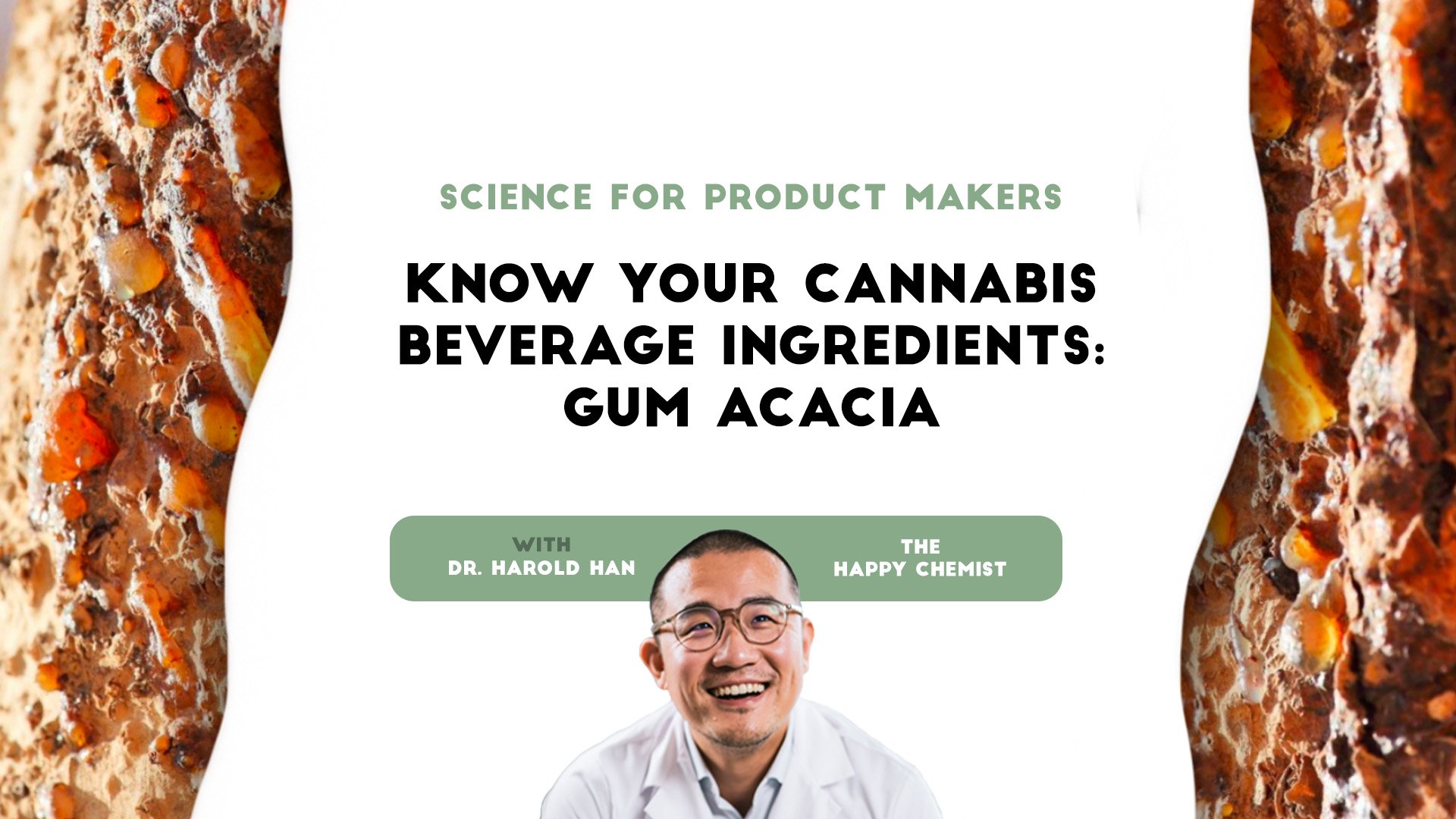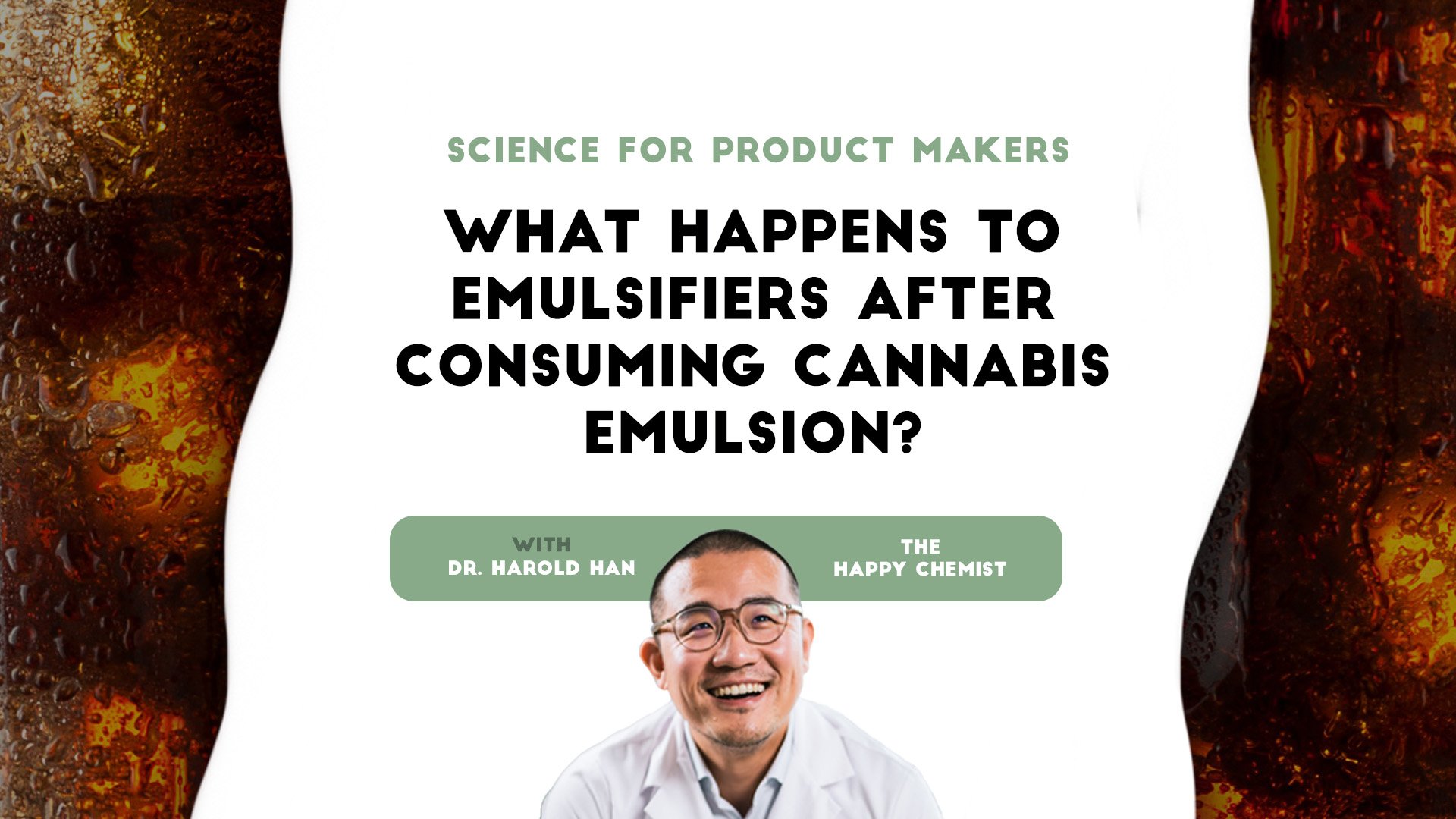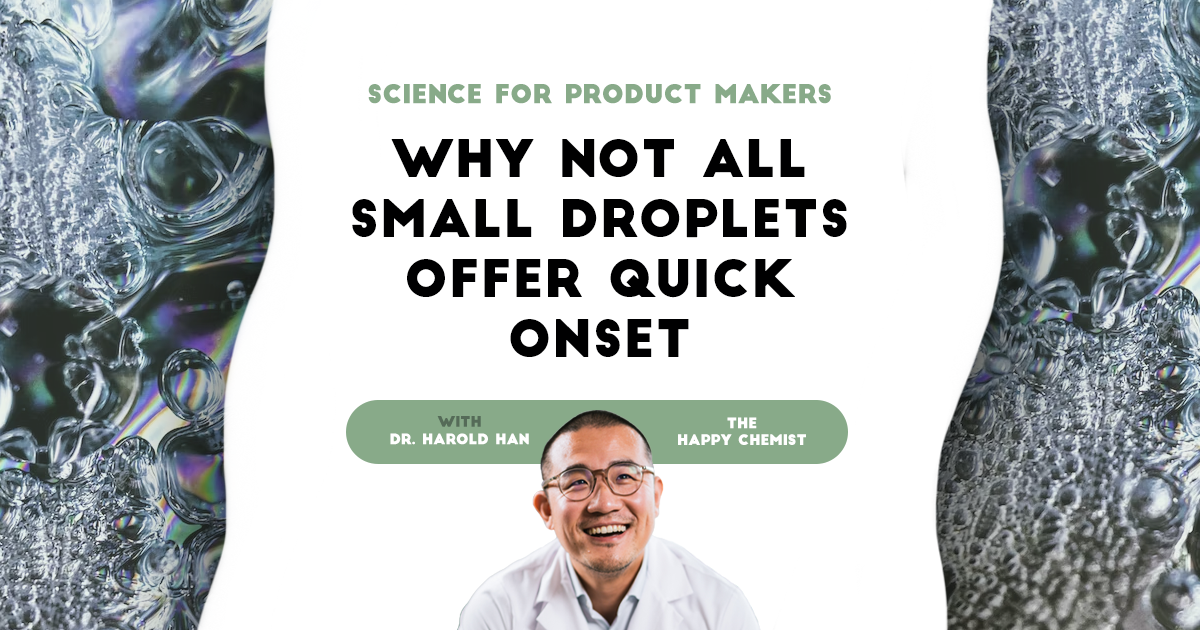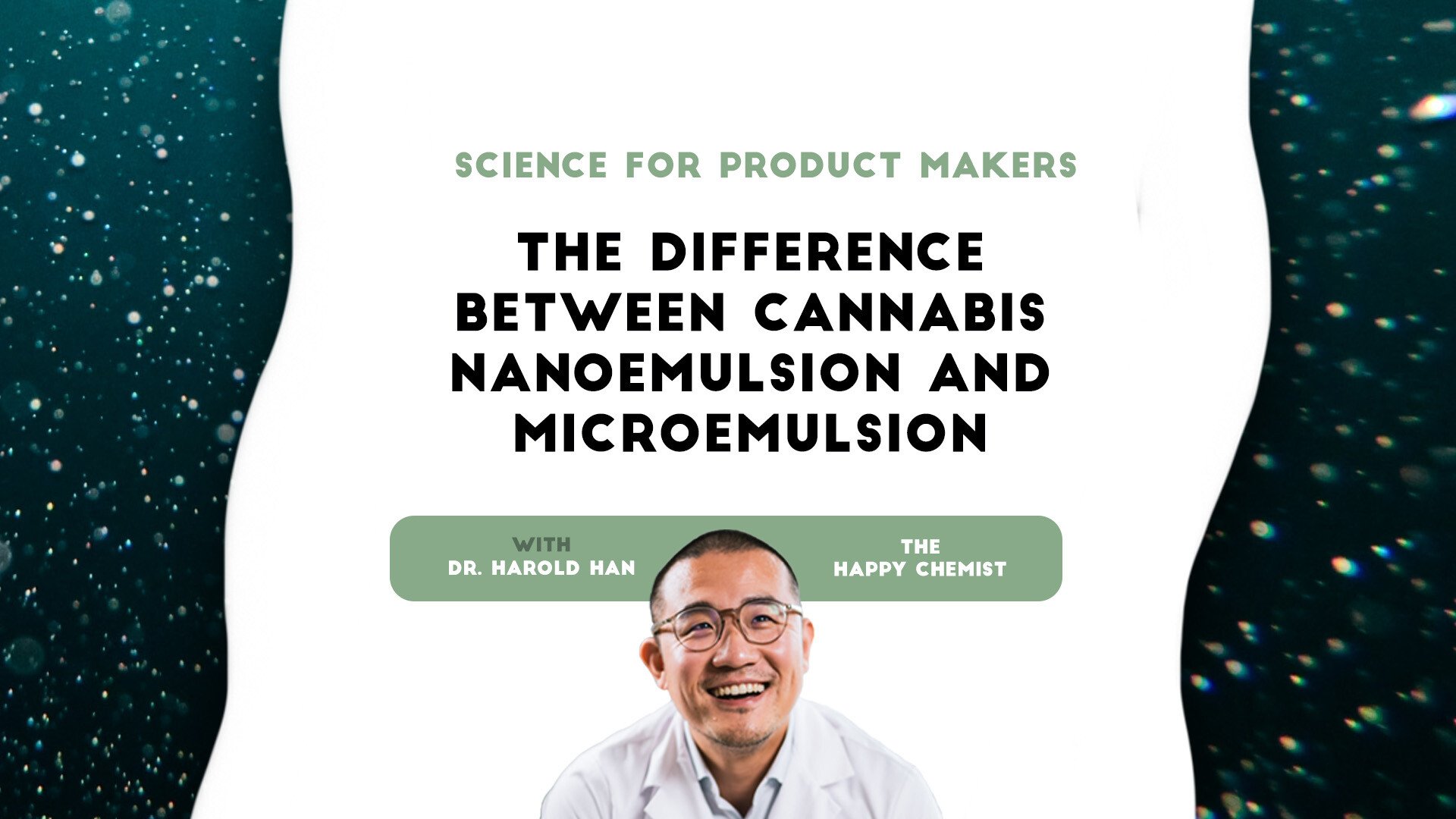Science for product makers: What happens to emulsifiers after consuming cannabis emulsion?
This post is also published as an article on Harold's LinkedIn profile. You can read and leave comments here. Have you wondered where the...
3 min read
 Dr. Harold Han - "The Happy Chemist"
:
6/28/24 8:16 PM
Dr. Harold Han - "The Happy Chemist"
:
6/28/24 8:16 PM

This post is also published as an article on Harold's LinkedIn profile. You can read and leave comments here.
Gum acacia, also known as gum arabic, is naturally derived from the sap of various species of the Acacia tree. It has been utilized for centuries for its amazing properties in emulsifying, stabilizing, solubilizing and filming. With the rapid growth of the cannabis beverage industry, gum acacia has found itself another perfect task: to deliver cannabinoids by way of a stable, palatable and scalable cannabis emulsion.

Left: Gum exudated from the tree
Gum acacia is a natural gift from Africa. It is mainly produced in the region called the “Gum Belt”, stretching across the continent from Guinea to Somalia.
The production of gum acacia starts by tapping the acacia tree. A small incision is made usually in October when the leaves start to fall. The incision doesn’t hurt the tree, but stimulates secretion of gum — its natural self defense mechanism. When it comes into contact with air and sunlight, the exudated gum curls into a golden ball, which is harvested as raw material. The gum is then dried, purified by removing the bark material and usually spray dried to generate a homogenous, consistent gum acacia powder.

Fig. 1 -
Gum acacia is a highly complex polysaccharide with a molecular weight of around 250 kDa. It is very challenging to draw its complete chemical structure, so researchers use a simple schematic to illustrate it (see fig. 1): the large bulbs are hydrophilic while the thin lines in between are hydrophobic. At the water / oil interface, hydrophobic parts are naturally attracted to the cannabis oil phase and the hydrophilic part (the large bulbs) to the water phase (see fig. 2).

Fig. 2 -
Every can of Coca Cola, and a majority of CPG products, use some level of gum acacia. It's all thanks to its amazing properties:
As a widely applied food ingredient, gum acacia already plays an important role in the cannabis beverage industry. The value it brings to flavor and stability ensures its popularity in the future development of the industry. Furthermore, there's still much to be explored regarding gum acacia’s efficacy when combined with certain cannabinoids (such as CBG) to maximize its therapeutic effects and target inflammatory bowel disease (IBD) and irritable bowel syndrome (IBS). Even though gum acacia is already a part of our everyday lives, there’s still more to unlock!
Dr. Harold Han — the “Happy Chemist” — combines his storied background in emulsion chemistry and science with curiosity and fascination in the rapidly growing cannabis industry. Developing nano and micro emulsions his entire career, Harold holds a Ph.D in Surface Chemistry from NYU and is the inventor of multiple patents in emulsion chemistry.
As the Chief Science Officer at Vertosa, Harold spearheads the company’s development of industry-leading and customized active ingredients for infused product makers, offering pre-suspended aqueous solutions to create incredibly homogenous and stable products while maximizing bioavailability, clarity, and taste.
To learn more about the science of cannabis, check out Harold’s Happy Chemist videos.
Additional sources:
Header image: Stacte, Myrrh natural exudation, Opobalsamum, Light Myrrh pieces, Light myrrh treated with Styrax benzoin, 06, 2019

This post is also published as an article on Harold's LinkedIn profile. You can read and leave comments here. Have you wondered where the...

This post is also published as an article on Harold's LinkedIn profile. You can read and leave comments here. Inmy last post, we learned that a...

This post is also published as an article on Harold's LinkedIn profile. You can read and leave comments here.